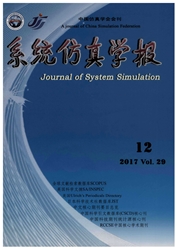

 中文摘要:
中文摘要:
目前线性鉴别分析(LDA)方法是在原始图像上直接进行,抽取的是图像的全局特征,受光照、表情变化而引起的局部高频信息影响较大,忽视了更能反映图象本质的低频特征。为此提出先将图像进行多尺度划分,再提取划分后的每个子图像的低频部分,组合起来作为该图像的特征向量,最后根据这些特征向量再应用LDA方法进行鉴别分析。多尺度低频特征组合的向量反映了图像从局部到全局的全部低频特性,具有更有效的鉴别信息。在ORL和Yale人脸库上的实验结果显示,所提出的算法识别性能显著提高,鉴别能力更好。
 英文摘要:
英文摘要:
Current LDA (Linear Discriminant Analysis) operates directly on original images, and the extracted feature is the general character of an image. The general character is deeply influenced by the local high frequency information caused by lighting condition and facial expression. So that some local low frequency characters of an image are lost which may contain effective discriminant information. A new method to improve the discriminant ability was developed. The image was divided with different scales. The low frequencies of the original image and all sub-images after each division were extracted. All these low frequencies were combined and used as the feature vector of the image. LDA was implemented based on these more effective feature vectors. Because the feature vector covered the low frequency characters of an image from local to general, it had more effective discriminant information. A series of experiments were performed on ORL and Yale human face image database. The experimental results illustrate that the performance of the proposed method is obviously superior to that of corresponding LDA algorithms in terms of recognition rate.
 同期刊论文项目
同期刊论文项目
 同项目期刊论文
同项目期刊论文
 期刊信息
期刊信息
